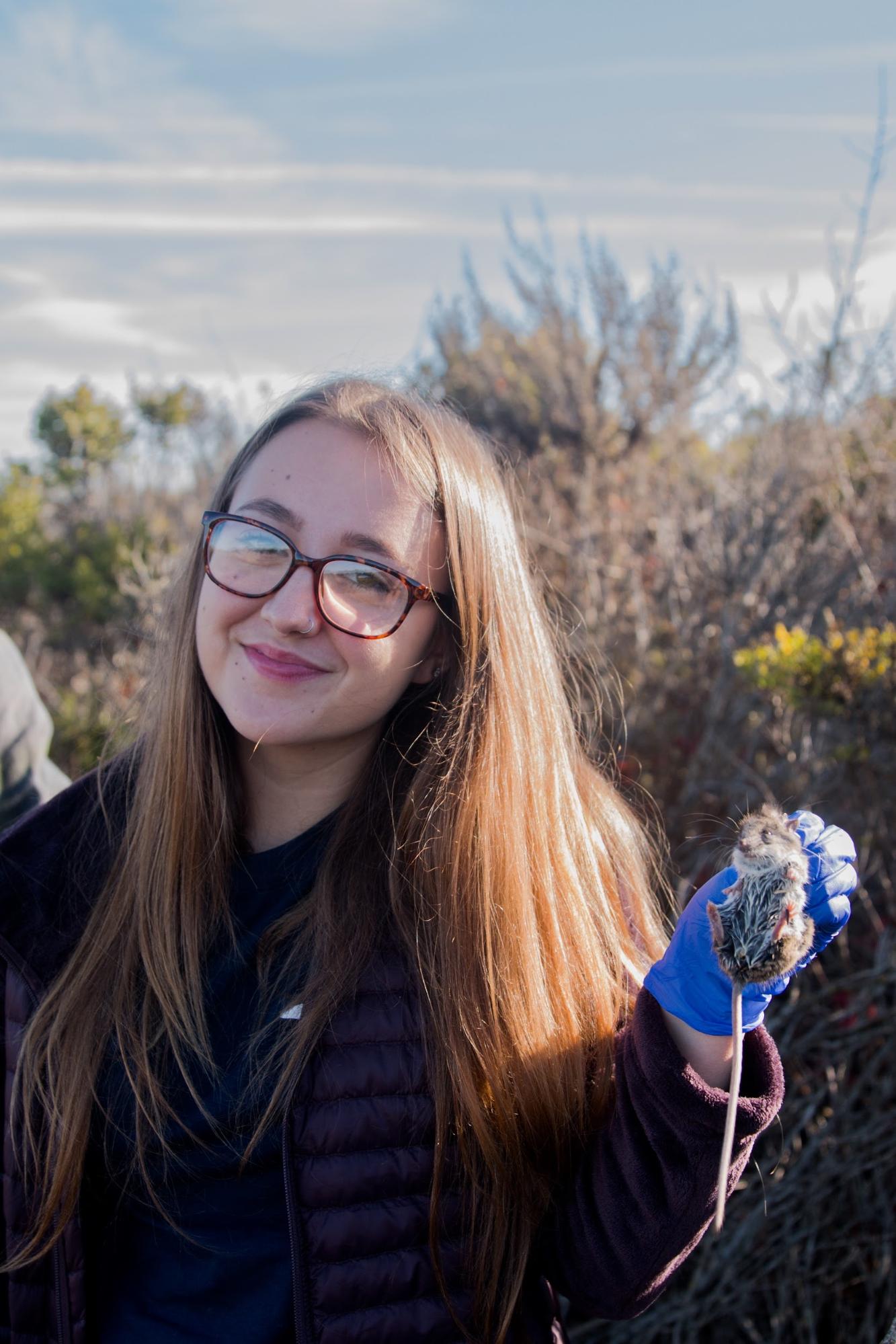
Why are educational guides on small mammal diversity important?

Shelby with a mouse
As interns with the Small Mammal Undergraduate Research in the Forest (SMURF) program, we trapped, handled, and recorded data on small mammals (mice, rats, shrews, and voles) at Younger Lagoon Reserve (YLR), Fort Ord Natural Reserve (FONR), and the Forest Ecology Research Plot (FERP). During our internship, we found mammal identification sheets difficult to interpret and confusing to apply in real-life. The identification sheets had only one image supplied for each species, which did not show possible coat color variation within the species, leading to possible misidentification. Additionally, some of the photos used on the sheets were not of local individuals of the species, so their features may not have accurately represented those caught at the reserves. Accurate identification of species is incredibly important for data collection because misidentification can lead to skewed results and incorrect conclusions. It also adds confusion when analyzing data for a recaptured animal and finding out it has been identified as two different species. We all agreed that it would benefit future interns of this program to have a clearer, more helpful ID sheet to make the identification process simpler and more accurate.
Outside of the internship, as UCSC students, we would have liked to know more about what species live on campus, but never knew where to find this information. In addition to the specialized guide for SMURF interns, we also agreed that we needed to create information for the wider UCSC

Gabby with a mouse
community.
How did we address the problem?
We compiled two educational materials to help interns and UCSC students learn more about the small mammal diversity on campus: an ID guide for SMURF interns, and an educational display on Upper Campus.

In order to share the small mammal information that we were gathering with other students, we decided to produce a permanent sign on the Seep Zone Trail in the Upper Campus Campus Natural Reserve. We added a QR code linked to the SMURF webpage so interested viewers would have access to more information about species that are and are not on the sign. Using our resource, students can become more aware of the often overlooked wildlife that is present on campus and can also be introduced to a way of getting involved with these animals through hands-on research.
In order to create the education sign and the specialized identification guide for SMURF interns, Shelby created illustrations highlighting identifying characteristics of the different species of rodents. For her illustrations, she took the UCSC Natural History Illustration course in Spring quarter 2019 and was assisted by the instructor Emily Underwood. Utilizing online images and information from field guides, she created an illustration for each of the species in the species identification guide and labeled important distinguishing characteristics for each species. Two illustrations were also used on the educational sign to show what a dusky-footed woodrat and a California Deermouse look like. Our guide is available online here.

Gabriella, on the other hand, trapped small mammals at YLR, FONR, and the FERP during SMURF trapping sessions in Spring quarter 2019. Working with the Spring interns, she took pictures of the individual rodents in a glass cookie jar to show coat color, sex, shape, and other identifiers for the more comprehensive SMURF ID sheet. Surprisingly, the cookie jar worked phenomenally out in the field--it was not cumbersome to carry around, and the lid made it ideal to prevent mice from escaping prematurely. She used her phone camera and a camera rented from the Norris Center to take the pictures.
After all the trapping sessions, Gabriella went through all the photos and compiled folders for each species used in the ID guide. After conferring with Alex Jones (the SMURF internship leader), and Shelby, we compiled all of our final photos for the guide. In total, we had diagnostic photographs of nine local species, only missing three species (Microtus californicus, Chaetodipus californicus, and Reithrodontomys megalotis), which we gathered photos from Flickr. From there, we used Adobe InDesign to create and stylize our ID guide and sign. The final draft of our ID guide is uploaded to the UCSC SMURF website.

We are very excited about our new and improved ID guides and our educational sign, and we are extremely thankful to the Norris Center and our sponsors for making our project possible. We hope that our species identification guide will be beneficial to future SMURF interns, and we hope that our educational sign will teach others about wildlife they might otherwise have not known about. We feel as if this project has truly enriched our educational and scientific experiences here at UC Santa Cruz and we are very grateful for all of the help we have received along the way.
